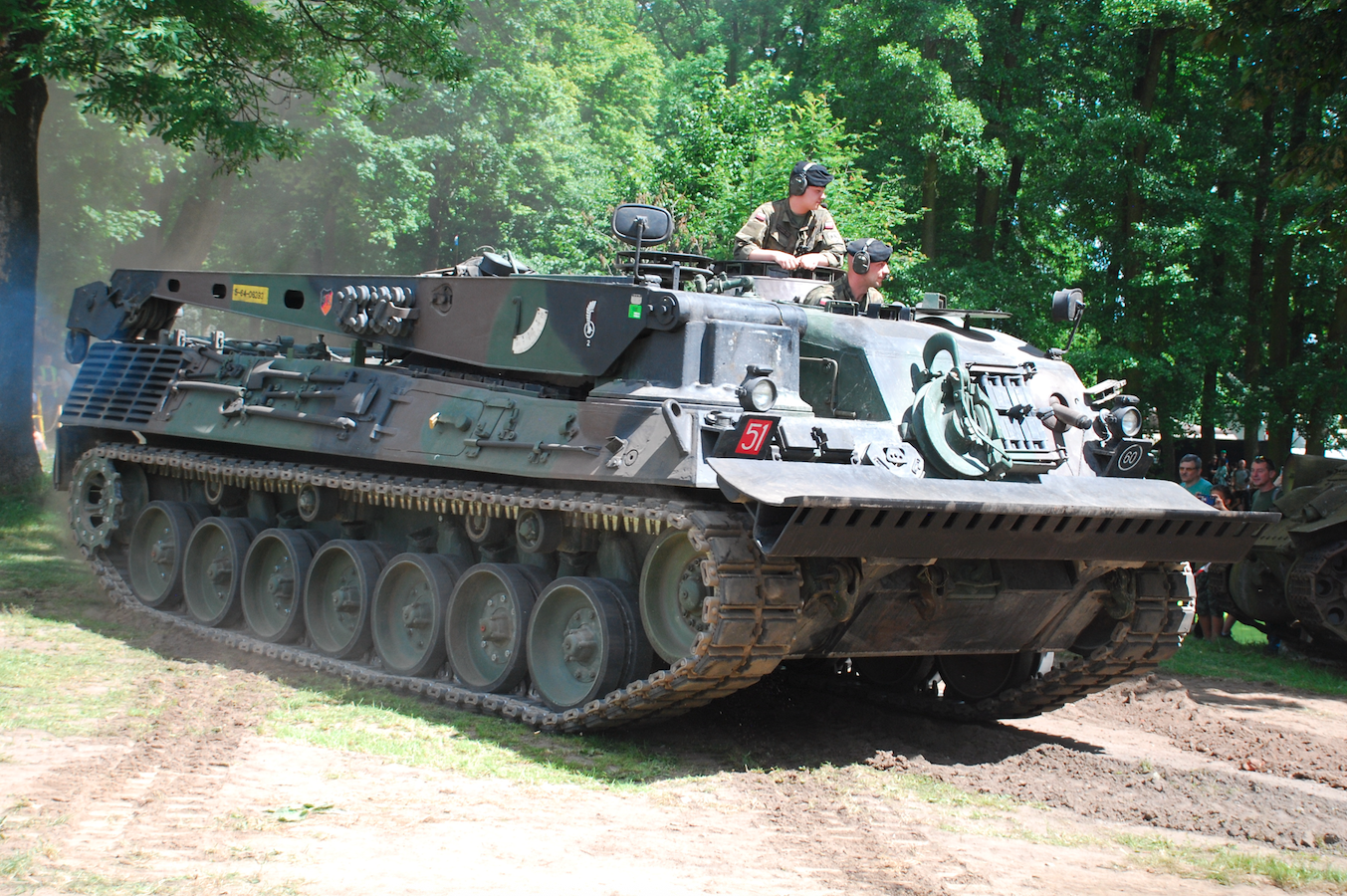Drzonów 2025
One of the museum’s greatest attractions
Mr. Jarosław Sobociński
The upcoming celebration of the 40th anniversary of the official opening of the Lubuskie Military Museum in Drzonów on May 8, 2025 is an opportunity and at the same time an impulse for reflection, analysis and contemplation on the development of this famous Polish museum facility. It is therefore worth attempting at this point to sum up this period not so much in terms of its development in general, but rather in terms of outdoor events, which contributed more to the popularity of the facility than its equally attractive collections themselves.
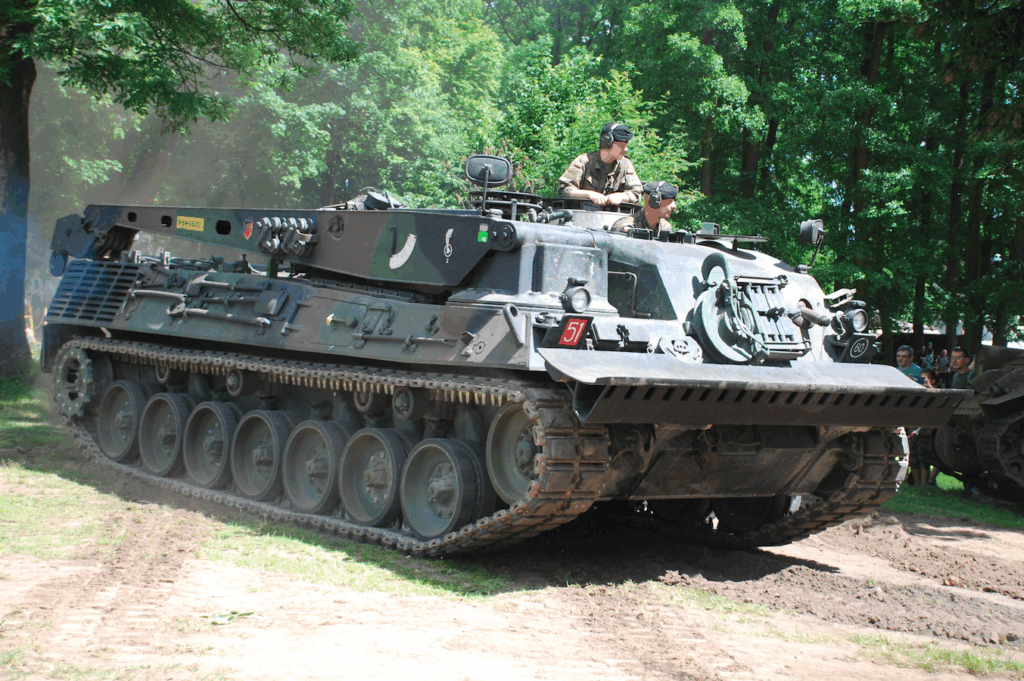
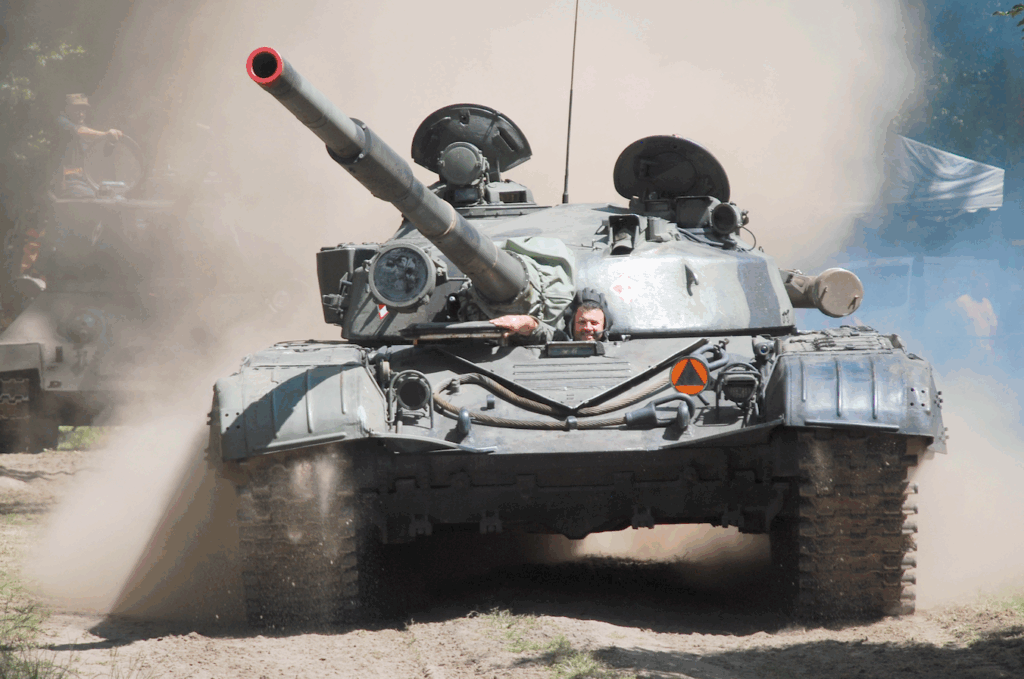
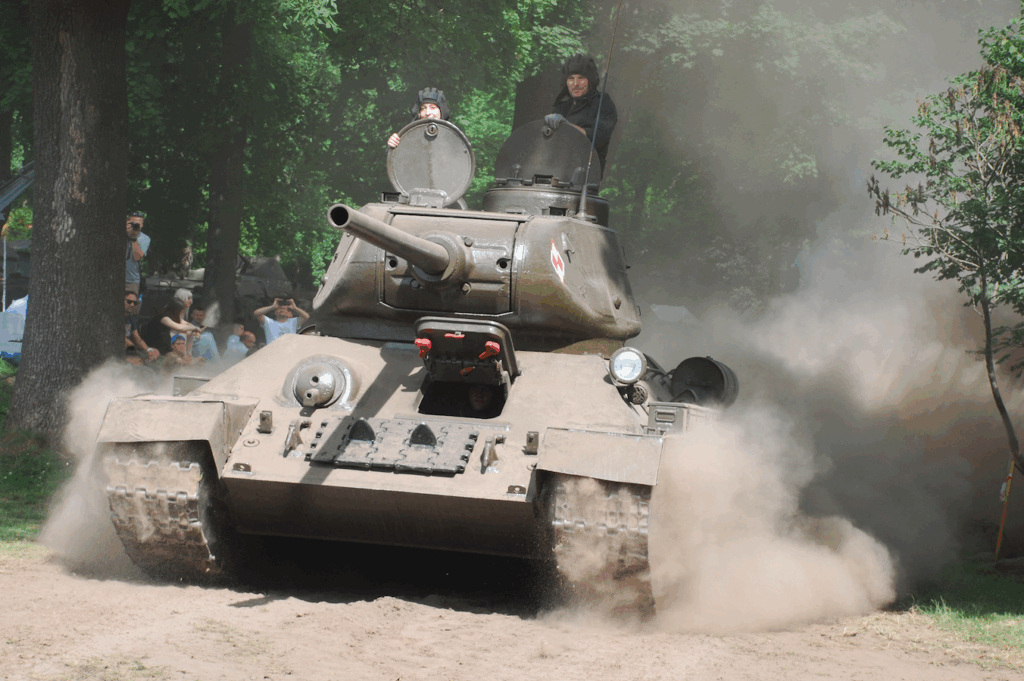
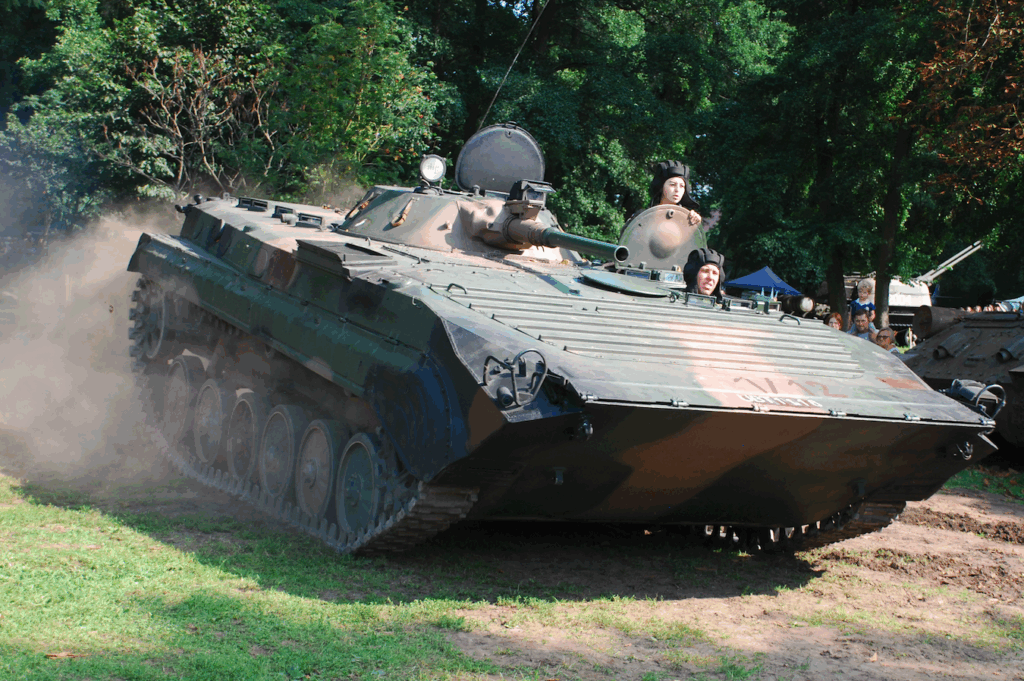
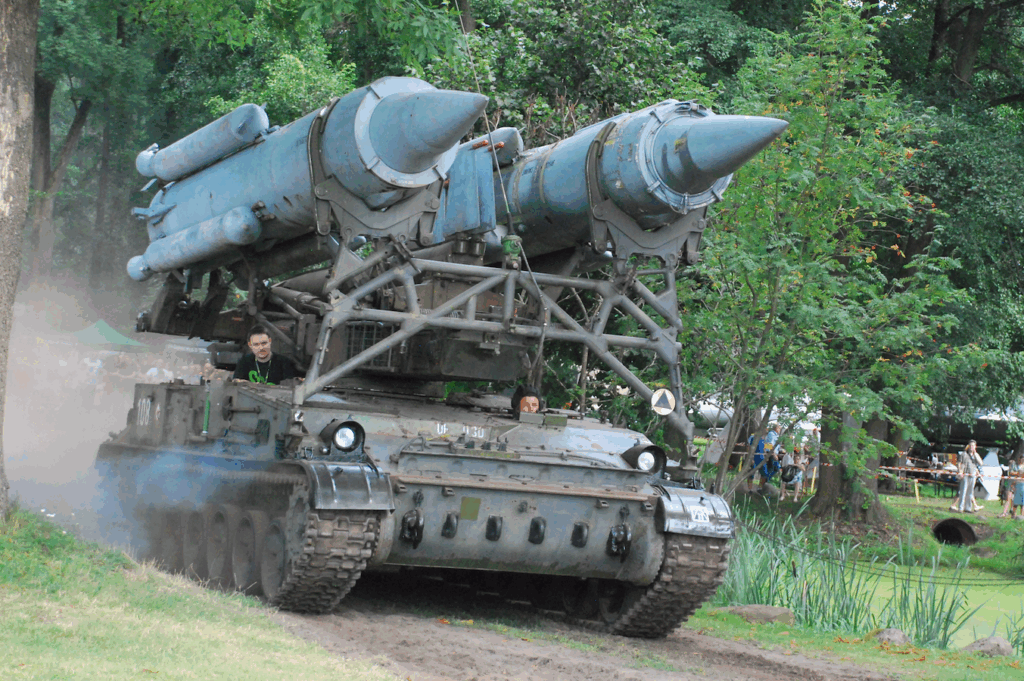
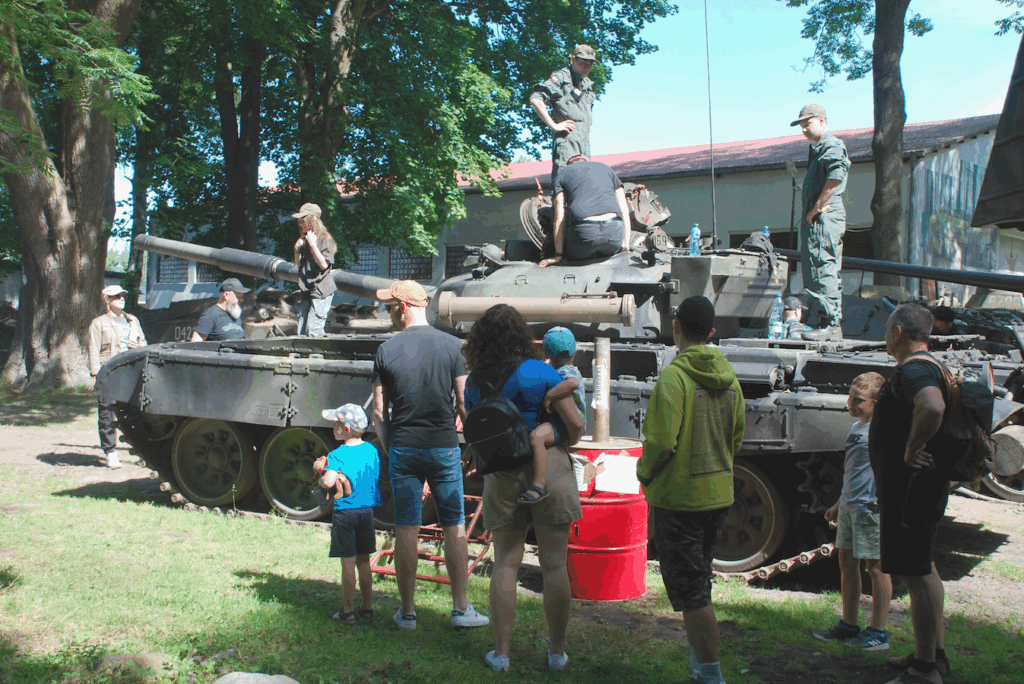
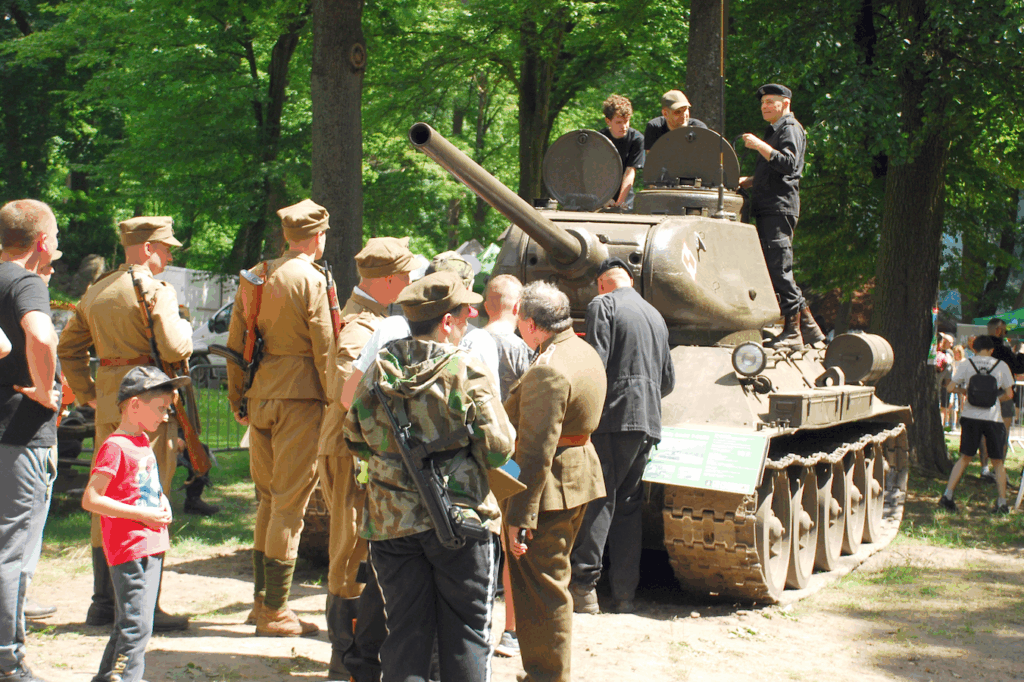
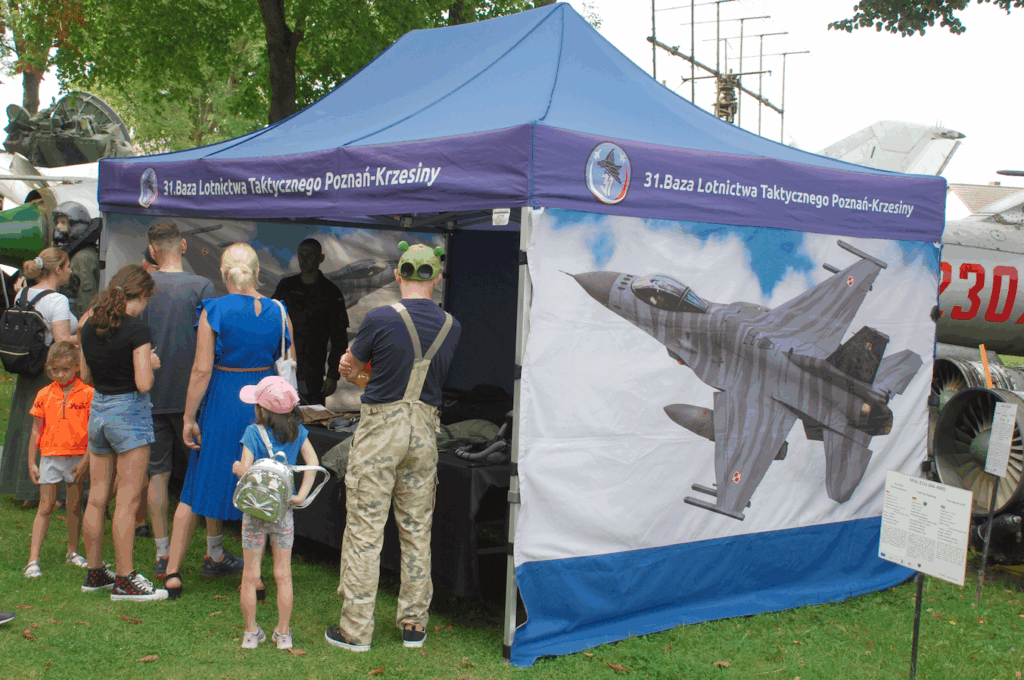
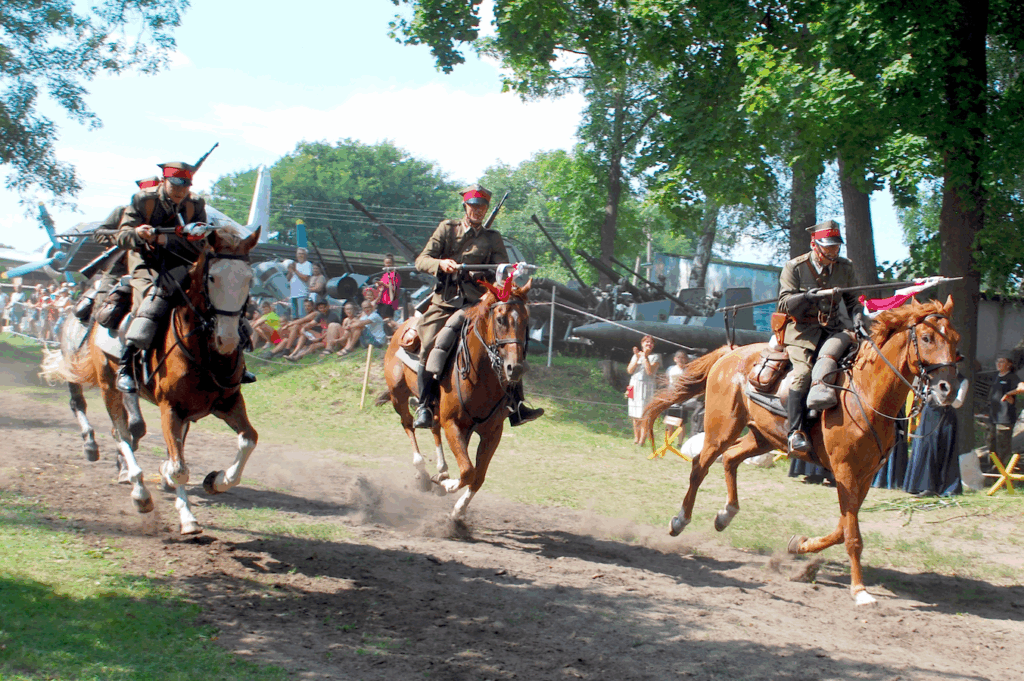
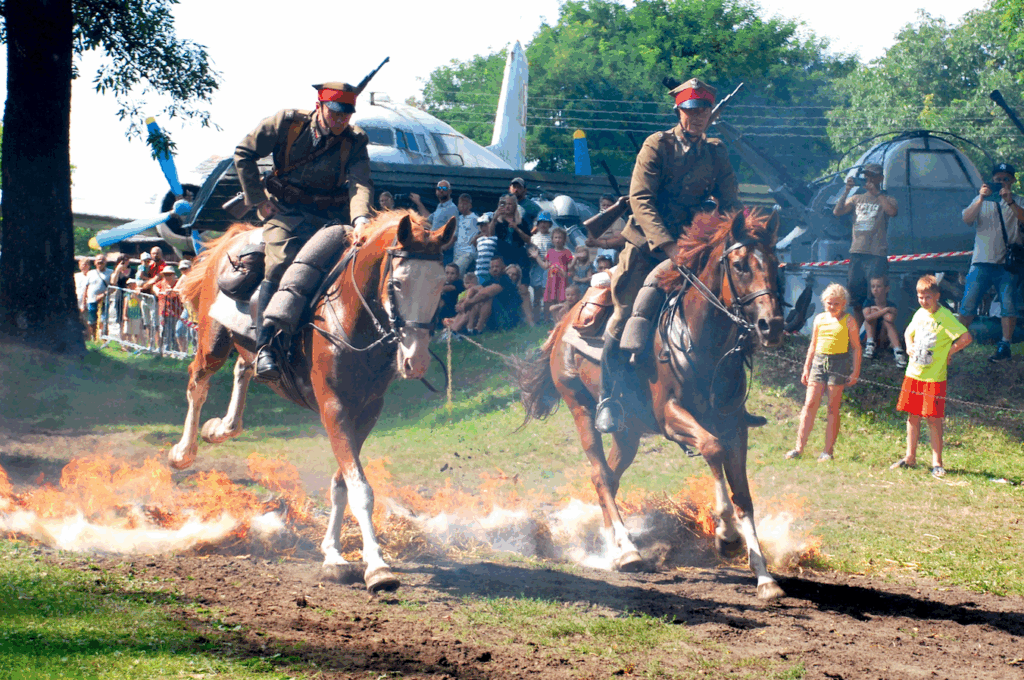
If each era were to be analyzed from a longer perspective, it could be divided into different stages. Of course, these were only conventional stages, understood as the passage of time marked by various events. Nothing happens suddenly, so each transformation is fluid in its own way and its detection and correct interpretation often require the passage of tens or even hundreds of years.
Observing the currently very dynamically developing world, we have the impression that the more new technology comes into use, the more changes there are and the more frequent they are. However, this is only a kind of illusion. What we observe on an ongoing basis is a process that will only be properly categorized in many years, and the current changes we notice are only small particles of a larger whole. It has always been this way, only human consciousness and the way of perception change.
The Lubuskie Military Museum, creating its beginnings since 1978, was also subject to these principles. Such stages included the period of renovation and adaptation of the building to the needs of the museum, the successive expansion of the exhibition area or the step-by-step creation of the outdoor collection itself. The official opening of the facility on May 8, 1985 was also the moment of completion of a specific stage of creating the whole. Probably 40 years of the museum’s existence since the official opening, falling in 2025, is definitely too short a time to create a large categorization, but one can try to indicate more important determinants.
In the era of the Cold War, the times of the NATO-Warsaw Pact confrontation, when the institution was being established, in the socialist political system of Poland, the activity of a museum with a military profile was not easy or simple at all. There was a politically defined historical narrative, so the media coverage had to be “properly” directed. Most types of equipment and supplies were secret or top secret, and asking even a historian or museum employee about specific technical or tactical values of a tank, plane or missile to deepen their knowledge could be considered an anti-state action, bordering on espionage. Therefore, the substantive level of knowledge regarding modern military equipment at that time was quite low. Today it seems embarrassing, but such were the times, we have to remember that. Especially since a similar level of protection against information leaking behind the Iron Curtain was also used in NATO countries.
What is important for a historian or enthusiast – the course of service, e.g. of an aircraft, the pilots who flew it, the tasks they performed or the technical details of the construction, were kept in the secret office of a given unit in flight books and technical service books, and after the period of active use of the equipment, these documents were destroyed. Therefore, today in many cases of substantive studies it is difficult to obtain a reliable historical analysis, hence the errors and unconfirmed assumptions in publications.
Another process was the possibility of acquiring equipment for the collections. On the one hand, military units helped with the transport and even assembly of exhibits on the premises of the facility, on the other hand, the acquisition itself was quite complicated. As a rule, incomplete equipment was transferred for museum purposes, lacking many elements of equipment (some of it was dismantled before being transferred to the Museum on the basis of acquiring spare parts for objects still in use in the unit – with the thinking “no one will need it in the museum anyway”). Military museums were generally treated as exhibitions of withdrawn, old equipment (i.e. Museum = old). Nobody in the military bodies of our country at that time even thought about donating “working” equipment to a museum, there was no such awareness, no such need was seen. The cognitive value concerned only the external appearance of the exhibit. Therefore, the success itself was the acquisition of new equipment for the collections, regardless of its state of preservation or technical completion.
The situation began to change after the fall of communism, after the change of the political system. However, these were slow changes, because it is not paper but people who change the world. The system changed, while habits and ways of thinking remained from the old era, from the previous system for a long time. The emerging business created opportunities to accumulate capital and use it in various ways. Among the owners of companies, who were often also military enthusiasts, the idea of buying military equipment for their private collections appeared. Initially, as before, only objects in category V and VI were considered, i.e. in a technical condition unfit for use. Over time, however, this situation also changed, and exhibits suitable for presentation in motion also became available. This idea moved, although again at a laborious pace, successively to museums. Although such facilities were always at the very end of the list of state budget subsidies, and maintaining exhibits, especially in a fully functional technical condition, absorbs a lot of funds, volunteers, soldiers previously trained on the given equipment, came to help in this context. In many cases, it is thanks to their help and enormous work that visitors can enjoy the experience of watching a tank, a personnel carrier or a rocket launcher in motion.
However, shaping this element was a long process and evolved naturally. In the case of the Lubuskie Military Museum, the foundations for the military picnics that are known and loved today were laid by the then head of the advertising department, Ms. Elżbieta Szyngiel. She was the one who came up with the idea of organizing outdoor picnics. The first such events began to take place in 1999 at the beginning of June, on the occasion of Children’s Day. On such a day, the Drzonów museum organized outdoor games and competitions for children, as part of school or summer camp group trips, but of course not only, also for entire families with children. You could enter a T-55 tank and the cockpit of a MiG-21U aircraft. At that time, the interior of the Mi-4A helicopter was also made available (due to the delicacy of the helicopter – it was not structurally designed for mass sightseeing, with thousands of people per season, and in order not to expose the exhibit to damage and excessive loads, this presentation was discontinued after a few seasons. Currently, it is made available exceptionally during certain picnics, e.g. modelling ones).
On the wave of growing interest in regional tourism, having a large grassy area under trees was a kind of advantage. During the June picnics, children took part in games and entertainment, could play football or take part in art competitions and win prizes. All this meant that the popularity of this event began to grow year by year. When Poland was preparing to join the EU, in 2003 the museum began to organize a picnic under the auspices of this undertaking under the name “Safe Holidays in the European Union”. The originator and main implementer was once again Ms. Elżbieta Szyngiel. These festivals were enriched with performances by various artistic groups on a professional large stage set up on the museum grounds, in the light of stage spotlights. They were supplemented by the still few souvenir stands and military pea soup served by soldiers from a real field kitchen, as well as various competitions and games for entire families. At that time, it was standard to invite a different automotive company each year to present its cars. Subsequent editions of the picnics were successively enriched with battle reenactments.
Since 2005, the Lubuskie Military Museum has started to organize another interesting event in the form of a picnic. It was the European Night of Museums, to which the Drzonów institution was officially invited as the first of the Lubuskie museums to organize. It was and still is one of the most interesting outdoor events, because communing with historical exhibits in the open air illuminated by multi-colored spotlights, a night presentation of the fire theater, historical dances or knight fights makes an incredible impression, showing the museum literally in a different light. The whole thing, complemented by trade and souvenir stands – has become a great attraction for visitors. The tradition and highly anticipated moment of the end of the night event is the light and pyrotechnic presentation of the selected exhibit, complemented by the background music and a fireworks show at the end. The beginnings of this event were quite modest and were limited to lighting the area with a few moving and a few fixed spotlights. Despite this, interest in the event was huge from the very beginning and in some years exceeded the physical capacity to safely accommodate all visitors! Of all the European Museum Nights in Drzonów, the 2014 edition was one of the most beautiful, organized by the new director, Mr. Piotr Dziedzic. During it, not only the music and fireworks, but above all the stage laser show made a colossal and truly unforgettable impression on all viewers. This type of presentation has only taken place once before in the Drzonów museum.
Progress in everyday activities leads through their gradual evolution. This is what happened with the organization of the picnic on the occasion of Children’s Day. The popularity of the Drzonów event caused other institutions to start organizing similar events, because at the turn of the 20th and 21st centuries, a certain stagnation crept into regional cultural events. The increase in various presentations on the occasion of Children’s Day caused the duplication of events, and therefore a decrease in the number of visitors. Therefore, the idea of postponing this outdoor event by two weeks and linking it with the celebrations of the Armored Man’s Day, which falls on June 16, appeared in LMW Drzonów. This paved the way for the current flagship event, which has become famous in Poland for the large amount of military equipment presented in motion. This is an excellent opportunity to strengthen the museum’s contacts with other institutions and with nearby military units, which, in accordance with the current doctrine, are eager to show their equipment and facilities. The first exhibit in motion was the BTR-152 transporter, brought to a roadworthy condition thanks to the involvement of Mr. Krzysztof Motyl and cooperation with transport companies from Zielona Góra. Later, it was joined by an off-road vehicle UAZ-469B. The first large and heavy exhibits acquired by the museum as fully operational were the 2K11M1 “Krug” system – the 1S32M1 radar and the 2P24M1 launcher, which entered the collections of the institution thanks to over 9 months of efforts and direct personal supervision of the undertaking by Mr. Jarosław Sobociński, head of the Aviation Department. Technical care, repairs and presentations of this equipment during museum events were provided by former soldiers of the JW2211 unit trained in Skwierzyna, where this equipment was operated. The last currently acquired exhibit from the LMW collections restored to full operational condition is the T-72M tank, which was acquired thanks to Mr. Błażej Mościpan, the main inventory keeper of the LMW collections. Its renovation and launch were undertaken by an external company, and the care, ongoing repairs on site and presentation during museum events were provided by soldiers who used this equipment during their military service. The set of GSP-55 shuttles, acquired for the collections in the late 1990s, was also restored to a running condition (both were already fully complete at that time). Due to the complexity of the construction, the Su-22M4 aircraft was only partially restored to operational condition in the form of starting up parts of the mechanics and avionics and the pilot’s cabin lighting. These activities were carried out thanks to the help and cooperation of the Piła Military Museum and technicians who worked on this type of aircraft during their service.
Picnics on the occasion of the Armoured Man’s Day support and make more attractive numerous military units, with which the museum has maintained good relations for many years, every year. Thanks to them, visitors to LMW Drzonów can see the equipment that is their equipment from up close, from the outside, inside and also in a dynamic presentation. Thanks to this, visitors to the museum have already been able to familiarize themselves with tanks such as the Leopard 2A4, Leopard 2A5 and the newest Leopard 2PL, the “Krab” gun-howitzer, the “Osa” anti-aircraft missile launcher and many others. Permanent cooperation with the Museum of POW Camps in Żagań also results in frequent presentations of the T-34/85 tank, well-known and very distinguished for our history. This picnic has become not only a legend but also a great event in the form of additional attractions, presentations by reenactment groups as well as a knights’ village, stalls and stands of such great variety that it is difficult to list them all so as not to miss something.
Another opportunity to organize a picnic was the holiday celebrated annually on August 15 in honor of the Miracle on the Vistula. On the wave of popularity gained by the Drzonów Museum Night and the Tankman’s Picnic, our national holiday on the occasion of Polish Army Day also became a day to organize an outdoor event. The first edition of this new formula was organized on the occasion of the 99th anniversary of regaining independence, in 2017. In accordance with its assumptions, the event widely presents various historical forms, from knight shows through reenactment groups, dynamic presentations of both technical equipment and horse riding skills performed by various formations. Over 28 years of good relations between the Museum and the 31st Tactical Air Base from Krzesiny near Poznań, results in cooperation in the renovation of aviation facilities, acquisition of exhibits, but also frequent mutual visits, including advertising stands at picnics, especially those on the occasion of Polish Army Day with presentations of equipment and weapons. The August 15th Picnic is the second, after the Tankman’s Day, flagship event, very popular with visitors and visited in large numbers. Also in this case, the multitude of different types of stands, from souvenirs to delicatessens, means that there is plenty of attractions for everyone, for children, adults and entire families.
However, before these two flagship annual events appeared in the calendar of the Lubuskie Military Museum, the Knights’ Picnic was organized in the years 2015-2017. It was an undertaking that somehow combined into one historical series the Children’s Day festival with the later picnic on the occasion of the Armored Man’s Day. A very attractive formula allowed visitors to familiarize themselves with the history of past centuries, presented by enthusiasts from various Knights’ Circles. The opportunity to observe knights’ fights and even participate in them for the bravest of visitors, with an extremely witty and captivating commentary on the whole, always caused shouts of admiration, joy and bursts of laughter from those gathered at the show. The opportunity to put on knights’ armor or at least its elements, to try fencing with a sword or saber is an unforgettable experience but also gives a taste of what the conditions were like and how difficult the fights were several centuries ago.
On one occasion, it was also possible to organize an event on the museum grounds, an incredible event in its concept, the idea of which was conceived and implemented on behalf of the Museum by Jarosław Sobociński. It was the Night of the Perseids, or the “Night of Falling Stars”. In cooperation with the “Venus Planetarium” which is a part of the Kepler Science Center in Zielona Góra, in the late evening of August 12, 2017, thanks to the planning of various astronomical presentations, the audience could learn a lot not only about the Perseids themselves, but also about space, stars, suns, planets and the Universe surrounding us from all sides. The advantage of the presentation in Drzonów was, as discussed by astronomy experts, the distance from the city and therefore low light pollution, allowing for very good observation of the sky through telescopes brought from the planetarium. Good weather allowed for observations and presentations until 1:00 a.m., on August 13. The obstacle to organizing subsequent editions was the concern of astronomers about the very expensive and delicate equipment that had to be transported from Zielona Góra over a considerable distance, not always on good quality roads that could damage the delicate optics of the telescopes. Despite this, the event was visited by crowds and very highly rated by all who participated in it.
And finally, an interesting digression. In order for an event to be advertised and thus reach people, information about its organization is needed. How has its transmission changed over the last 40 years, since the moment when LMW Drzonów created its seeds?
In the context of, as we now say – marketing and advertising, i.e. also the transmission of information, we can distinguish the period of photography (and within it sub-periods of black and white, then color, later digital, and even this is developing very dynamically, not resembling the one from its beginnings), the period of filming with portable cameras, later mobile phones and currently also with the use of drones, which definitely increase the perspective. The speed of information flow and thus information and publication has also changed dramatically over the last few decades. In the first years of the creation of the Museum, in order to be able to provide information about a new exhibition, it was necessary to write an article on typewriter on paper, send it by regular letter via traditional mail (or deliver it in person) to the local press and then wait for its acceptance by the editor and possibly make the necessary corrections and changes to the text. Television was then only a rarity, reserved for the largest events, but regionally for events such as museum exhibitions – rather unavailable. How does it look after 40 years? Films and photos are available almost in real time, thousands of people can watch events taking place in the farthest corner of the world with a delay counted not in minutes but in seconds! Today we cannot imagine the world and interpersonal contacts differently, but we often start to realize the saturation of information, the value and quality of which must be filtered, because physically their quantity becomes too great to be absorbed by our senses. That is why more and more often, perhaps with nostalgia again, we reach for an old album to look at an ordinary photograph from the past, starting to appreciate its value.
Photo and text: Jarosław Sobociński

